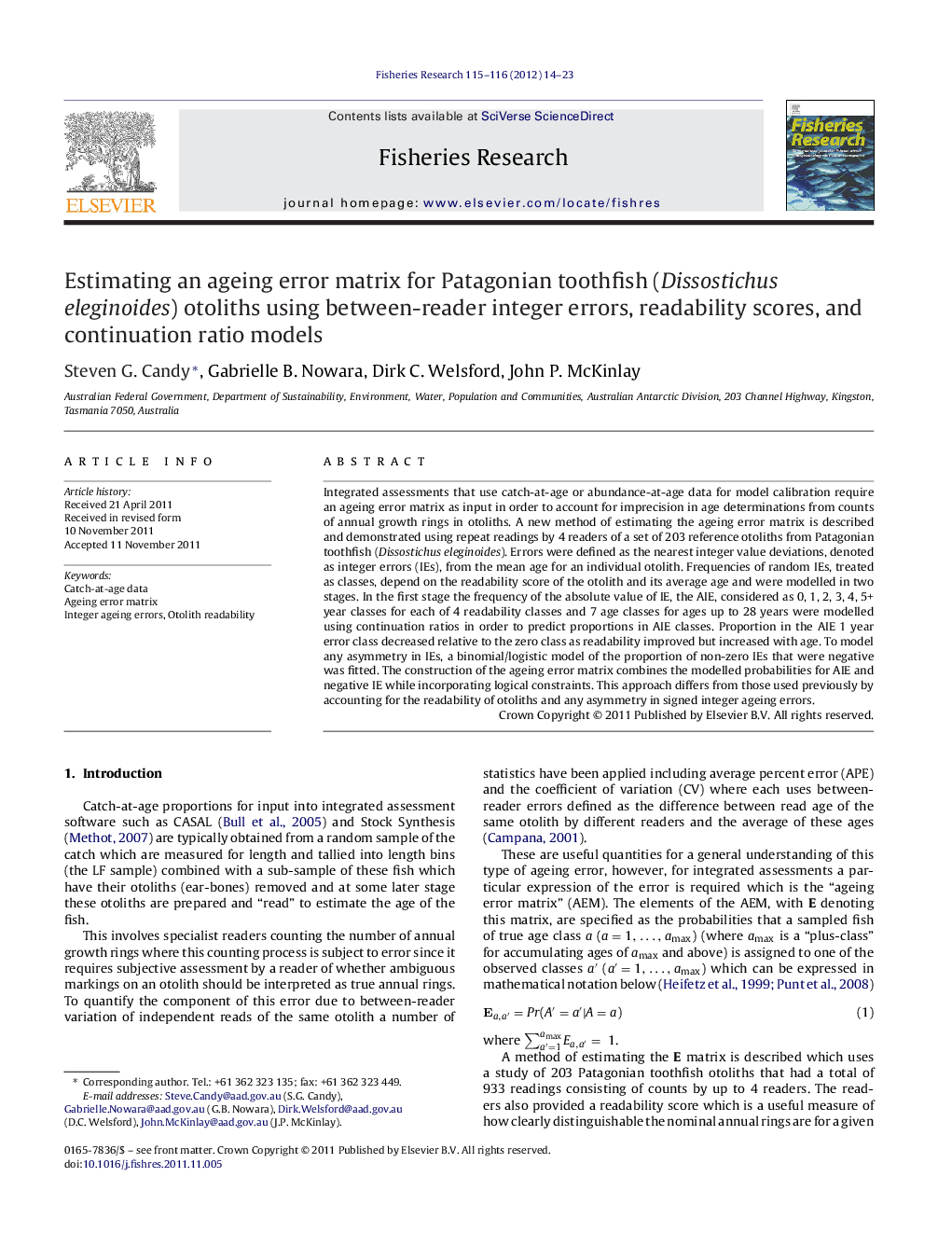| Article ID | Journal | Published Year | Pages | File Type |
|---|---|---|---|---|
| 4543461 | Fisheries Research | 2012 | 10 Pages |
Integrated assessments that use catch-at-age or abundance-at-age data for model calibration require an ageing error matrix as input in order to account for imprecision in age determinations from counts of annual growth rings in otoliths. A new method of estimating the ageing error matrix is described and demonstrated using repeat readings by 4 readers of a set of 203 reference otoliths from Patagonian toothfish (Dissostichus eleginoides). Errors were defined as the nearest integer value deviations, denoted as integer errors (IEs), from the mean age for an individual otolith. Frequencies of random IEs, treated as classes, depend on the readability score of the otolith and its average age and were modelled in two stages. In the first stage the frequency of the absolute value of IE, the AIE, considered as 0, 1, 2, 3, 4, 5+ year classes for each of 4 readability classes and 7 age classes for ages up to 28 years were modelled using continuation ratios in order to predict proportions in AIE classes. Proportion in the AIE 1 year error class decreased relative to the zero class as readability improved but increased with age. To model any asymmetry in IEs, a binomial/logistic model of the proportion of non-zero IEs that were negative was fitted. The construction of the ageing error matrix combines the modelled probabilities for AIE and negative IE while incorporating logical constraints. This approach differs from those used previously by accounting for the readability of otoliths and any asymmetry in signed integer ageing errors.
► Integrated assessments can require an ageing error matrix to account for imprecision in ages measured from otoliths. ► A new method of estimating an ageing error matrix is described and demonstrated using otoliths from Patagonian toothfish. ► Integer ageing errors were modelled using continuation ratios, average read age, and readability score. ► Logical constraints on the construction of the ageing error matrix are applied using a simple but rigorous method.
